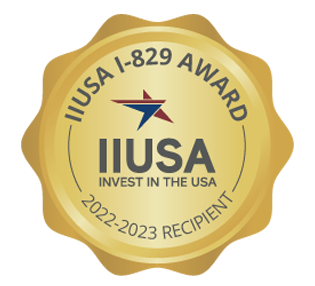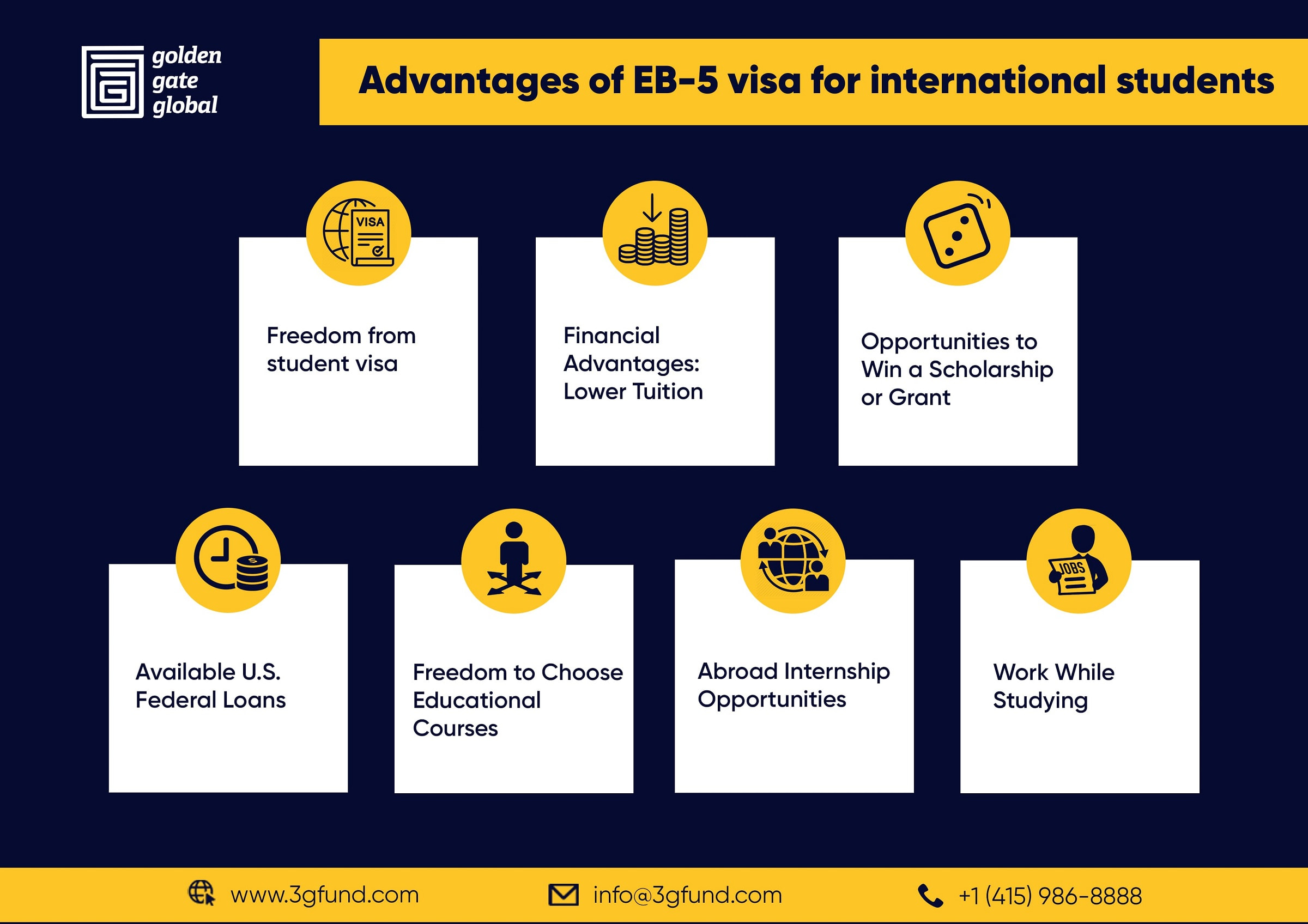Advantages of EB-5 visa for international students
Home to the World’s top universities, the United States attracts students from all over the World. Upon graduating from a good college in the United States, people find it easy to find a job anywhere in the World. However, the barrier to entry to join the workforce in the United States is very high. The EB5 Visa Program can help with lowering the cost of education and building a career upon graduation.
EB-5 Immigration Program
The EB-5 visa (Immigrant Investor Program) is a great alternative to an international student visa for prospective and current students. It was established by the federal government in 1990 to boost the economy of the USA. It is a direct pathway to get a U.S. Green Card.
Under this program, permanent residency is granted to investors, their spouses, and unmarried children under the age of 21. It requires a minimum investment of $800,000 in a targeted employment area (TEA) and $1,050,000 million in a non-targeted employment area. For an EB-5 visa application, you need to document the source of funds you are investing in. Lastly, your investment must create no less than 10 new permanent full-time jobs for qualified U.S. workers. The funds are invested in a real estate project and are usually repaid in 5 to 7 years.
Advantages of EB-5 visa for prospective students
Brings certainty to the admission process
EB-5 visa could be an opportunity for those who want to study in the United States. It brings certainty to the admission process. You do not have to wait for a student visa and take the risk of consulate closure or visa denial. Sometimes students get admitted to their dream universities, but due to consulate closure or other problems, they do not get a student visa. Some students miss an entire semester trying to get a student visa.
Financial Advantages: Lower Tuition
Universities in the USA have three tiers of tuition:
- in-state tuition
- out-of-state tuition
- international student program.
In-state tuition is for students who reside in the state where the university is located for at least a year, and it is the cheapest tier of the three. If you get a Green Card, you can move to the States, for example, study in a California High School for a year or more, and qualify for universities, like Berkley, with an In-State tuition fee.
Out-of-state fees are for students who are residents of America outside of the state of the university. These fees are still less than international student fees.
International student fee is for students who are not residents of the United States. Being an international student is the most expensive way to attend a university or college in the United States.
Let’s review an example. If the international student fee is $75,000 a year for a course, the out-of-state fee would be about $60,000, and the in-state fee could be as low as $25,000.
Opportunities to Win a Scholarship or Grant
If you are a US permanent resident, you have more chances of winning scholarships or grants for studying in US Universities. If you are a green card holder, you may be eligible for tuition-free education at your college or university if you meet certain criteria.
Available Federal Loans
US permanent residents have access to federal loans for education, which are a lot cheaper than loans in other countries about 5% to 7 %, where it could be as high as 10-11% and more per annum in certain other countries. Moreover, students are able to defer loan payments till they are gainfully employed.
Freedom to Choose Educational Courses
Not every course in university may qualify under the student visa program. If you are on an F-1 visa, you can only attend courses that qualify for that visa category. As a Green Card holder, you have more flexibility in your course selection.
Broad Internship Opportunities
A Green Card helps to create additional internship opportunities, which lead to job offers upon graduation. Often international students fail to gain internships during their school year. Also, a student visa could reduce the chances of getting employed after graduating from school.
Work While Studying
While studying, if you are a Green Card holder, you can be employed outside the scope of your field of study. International students are restricted to the number of hours and field of work, it should be related to their degree. International students in the US can work up to 20 hours per week on campus while school is in session and full-time (up to 40 hours per week) during school breaks. Not all on-campus jobs are available to international students. During school breaks, they may work off-campus only through Curricular Practical Training (CPT) and Optional Practical Training (OPT) programs, which allow students to gain practical work experience only related to their field of study. These restrictions do not apply to permanent residents.
EB5 Visa is one of the fastest ways to gain U.S. Permanent Residence or a Green Card. It offers many advantages for current and graduating students by removing restrictions that student visas cast on international students. Having a green card unleashes the true potential of a student studying in the United States.
For a Free Consultation with an Experienced EB-5 Professional Enter your Details
The opinions expressed in this video/blog post are solely those of the presenter/author. The information provided herein is for general informational purposes only and should not be considered as professional or legal advice. The presenter/author or Golden Gate Global do not endorse or take responsibility for any actions taken based on the information presented herein. Viewers/readers are advised to seek appropriate professional advice before making any decisions or taking any actions based on the content of this video/blog post.



